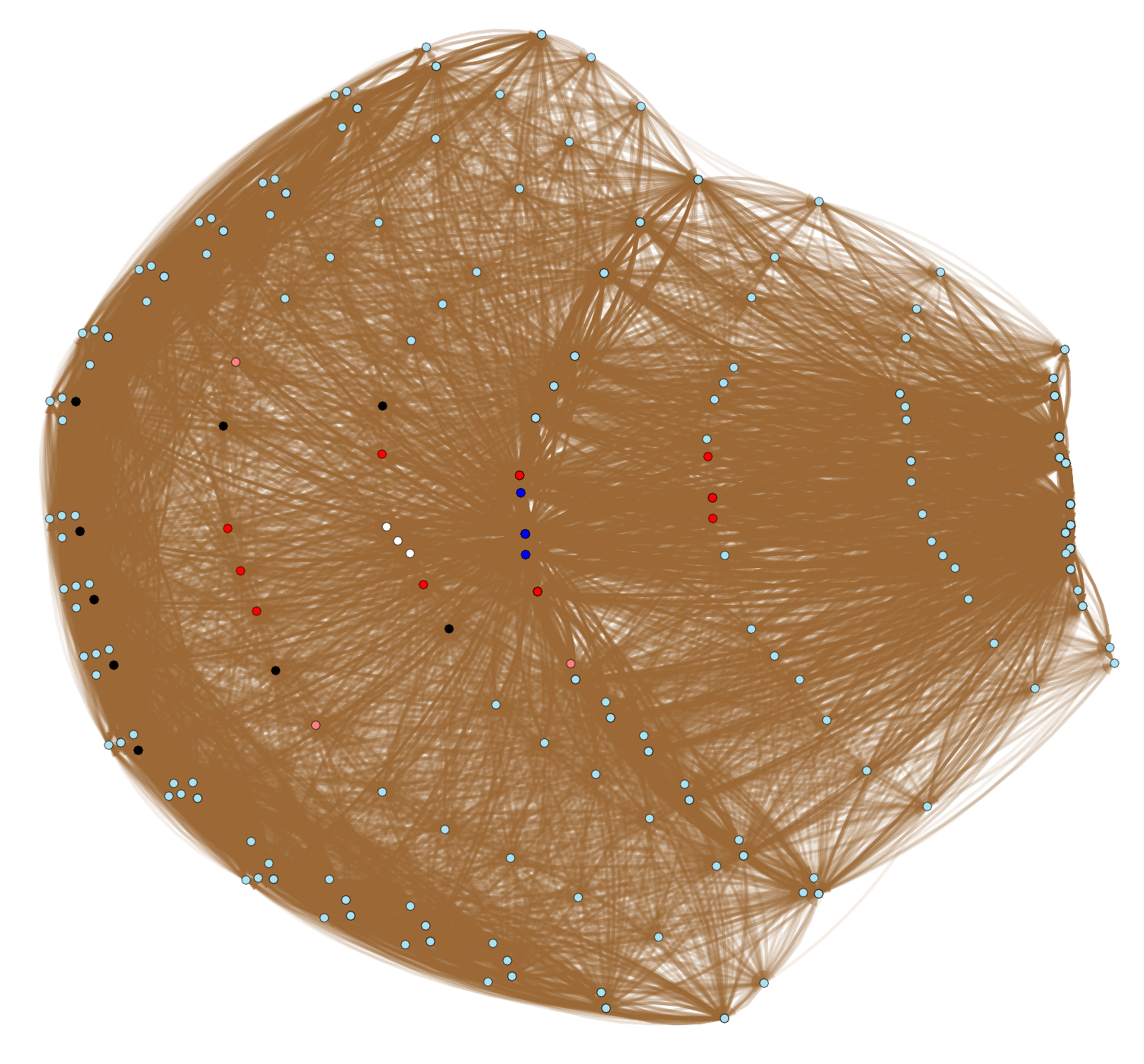Biological Organisation and Viability: A Theory of Autopoiesis in Cellular and Euclidean Automata
Spring 2024 to Spring 2025
Increasingly, biologists are emphasising the cell as the most fundamental unit of life, and importantly, a view of the cell as an emergent, dynamic object irreducible to its molecular composition — “greater than the sum of its parts.” But what makes a cell itself living? Most answers to this question are unsatisfactory: lists of properties or behaviours that always have exceptions. Moreover, there is a lack of consensus that does not appear to be near resolution.
The theory of autopoiesis offers a potential solution here, providing an operational definition of the organisation of a cell, independent of what molecules compose it. Autopoietic theory allows us to answer questions about when a cell dies, and how it can behave. However, for it to realise this utility, rigorous theories need to be developed for specific models of emergent individuals. Beer (2020) has previously used the Game of Life cellular automaton as one such model, and developed a mathematical theory of autopoiesis that can predict the behaviour and death of an emergent individual (Beer, McShaffrey, & Gaul, 2024).
I extend and reformulate this work to a broader class of cellular automata, called Larger than Life (LtL) (Evans, 1996). I then further extend the LtL theory to a Euclidean automata, called RealLife (Pivato, 2007), and provide evidence of the convergence of autopoiesis in LtL to RealLife. I also introduce a method for deriving automata rules from the organisation of an individual. This theory also has implications for our understanding of life and cognition, including a reevaluation of the relation between autopoiesis and the enactive approach to cognition (Di Paolo, 2005; Varela et al., 2017).
With this, many further questions can be pursued: the conditions for adaptivity, the relation between operational and physical boundaries, structural coupling, the origins of autopoietic systems, how the viability constraint relates to autopoiesis, among many others.
The code for this project is available in this Gitlab repository.
Relevant Publications
-
Gaul, T. M. (2025). Biological Organisation and Viability: A Theory of Autopoiesis in Cellular and Euclidean Automata. [Undergraduate Honors Thesis, Indiana University Bloomington].
-
Gaul, T. M. (2024). Autopoiesis in RealLife Euclidean automata. In ALIFE 2024: Proceedings of the 2024 Artificial Life Conference, pages 818-826. MIT Press.
Beer, R. D. (2020). An integrated perspective on the constitutive and interactive dimensions of autonomy. In J. Bongard, et al. (Eds.) ALIFE 2020: The 2020 Conference on Artificial Life, pages 202-209. MIT Press.
Evans, K. M. (1996). Larger than Life: It's So Nonlinear. The University of Wisconsin-Madison.
Evans, K. M. (2001). Larger than Life: Digitial creatures in a family of two-dimensial cellular automata. Discrete Mathematics and Theoretical Computer Science, AA, 177-192.
Evans, K. M. (2003). Larger than Life: Threshold-range scaling of Life's coherent structures. Physica D: Nonlinear Phenomena, 183(1-2), 45-67.
Di Paolo, E. A. (2005). Autopoiesis, adaptivity, teleology, agency. Phenomenology and the Cognitive Sciences, 4(4), 429–452.
Pivato, M. (2007). RealLife: The continuum limit of Larger than Life cellular automata. Theoretical Computer Science, 372(1), 46-68. Elsevier.
Varela, F. J., Thompson, E., & Rosch, E. (2017). The Embodied Mind: Cognitive Science and Human Experience (Revised). MIT Press.
